Oni Press, the multiple Eisner and Harvey Award-winning publisher, will unleash Free For All #1 by Eisner Award-nominated cartoonist Patrick Horvath (Beneath the Trees Where Nobody Sees), a violent, thought-provoking 56-page one-shot graphic novella!
The Beat conducted an email interview with Horvath to discuss the release of Free For All #1 further, especially how this thought-provoking project has changed with current events!
DIEGO HIGUERA: In our past interview, you had just announced the Zoop campaign. How has the jump been to have an Eisner award-winning publisher like Oni Press helping your comic get its physical release?
PATRICK HORVATH: It’s been amazing. The Zoop campaign succeeded in getting a special printing of the book into the hands of supporters for the first time, and now with Oni Press releasing it, it’ll be able to reach a huge audience. They’ve put immense enthusiasm and support behind the book, and their amazing team has been wonderful. On top of all that, I also somehow managed to be part of a fantastic slate of other books they have coming out this year.
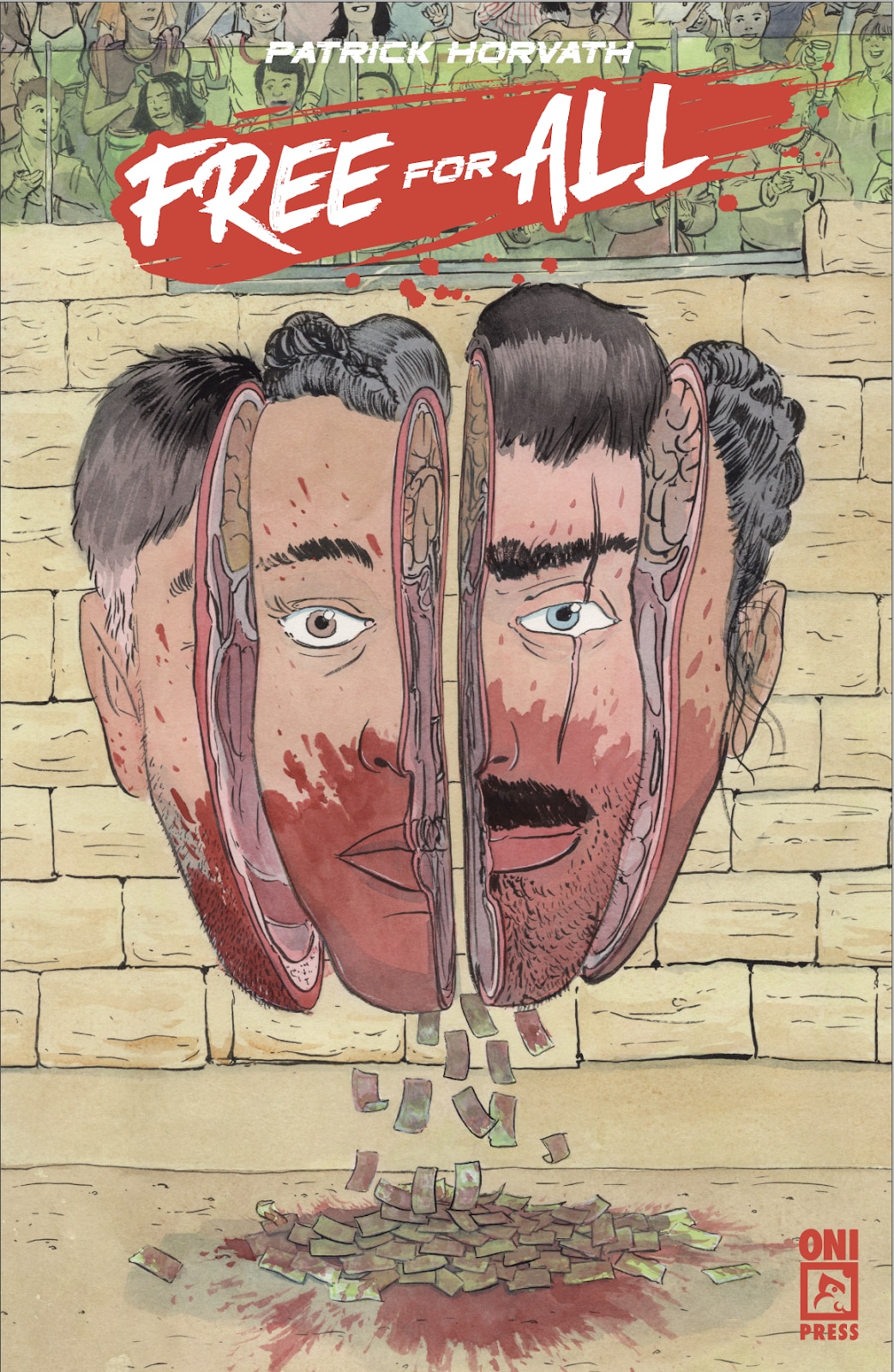 Photo Credit: Oni Press
Photo Credit: Oni PressHIGUERA: Free For All was originally a digital comic, but now it’s getting a full-fledged physical release. How has your perception of the project changed, and were there any tweaks or additions in bringing it to print?
HORVATH: When I first created it, it mainly was a catharsis for processing a lot of frustration with the world and to have an example of sequential art to show people. Now, the story of the comic couldn’t be any more relevant to the times we’re living through, which is a little mind-blowing and sad. I made some larger tweaks for the initial print run with Zoop that carried into the release with Oni, and then they brought in an amazing group of artists to create variant covers for the big push. All of a sudden, this teeny-tiny personal project was being filtered through these extraordinary cartoonists, whom I had already admired, and it was incredible to see.
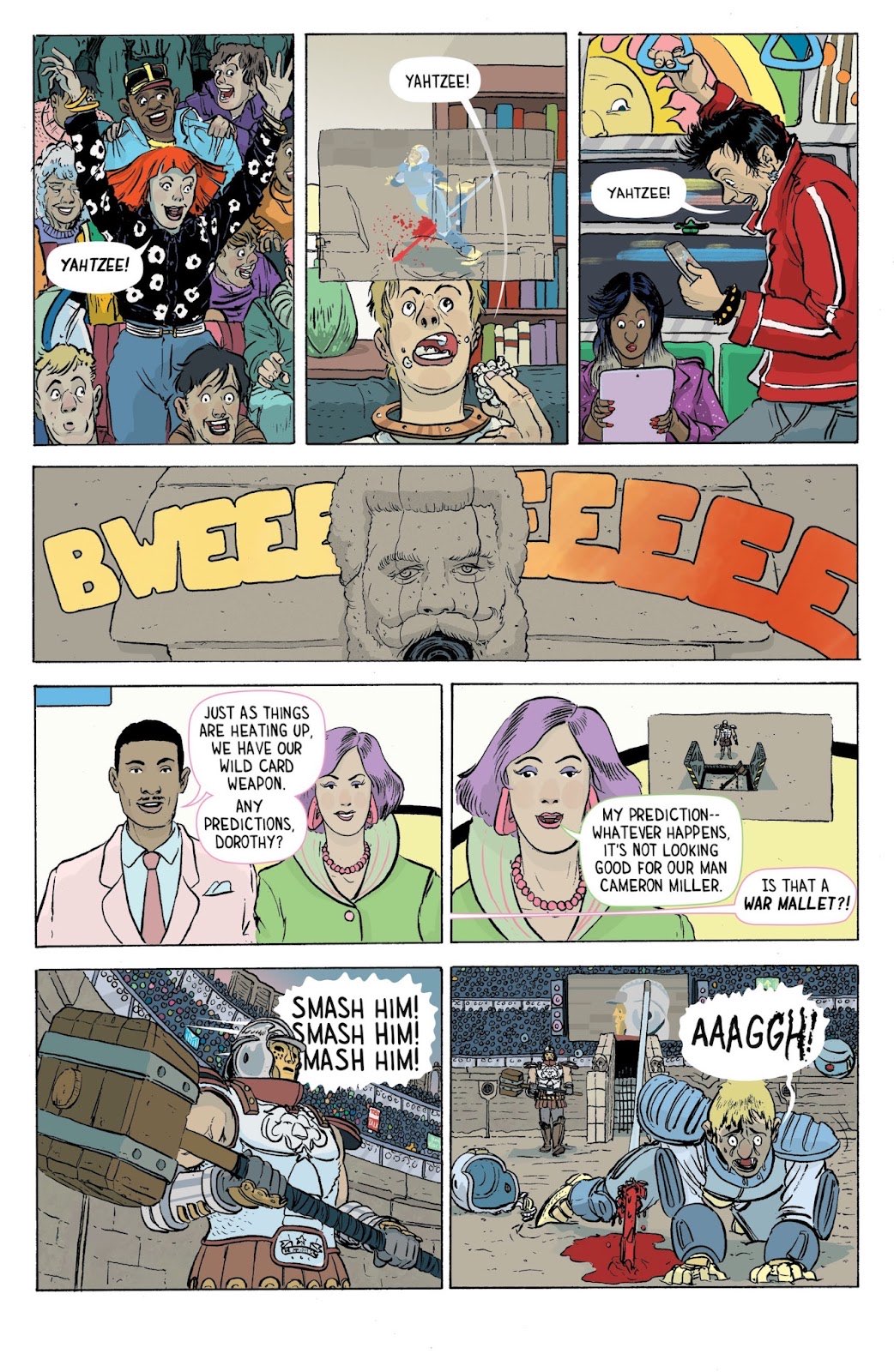 Photo Credit: Oni Press
Photo Credit: Oni PressHIGUERA: Ted Brooks and Luella Dominguez’s relationship adds a deeply personal layer to the narrative. How did their dynamic evolve as you developed the story, and what does their conflict say about power, wealth, and personal sacrifice?
HORVATH: When I first started writing the story, I was mostly focused on world-building and setting up the first fight that we see in the book. As I dug in, I realized there needed to be a much stronger emotional center to all of it. Luella quickly became the beating heart of it, and all of the turbulence that she goes through felt like the perfect way to show how success in capitalism is more often than not at odds with humanity.
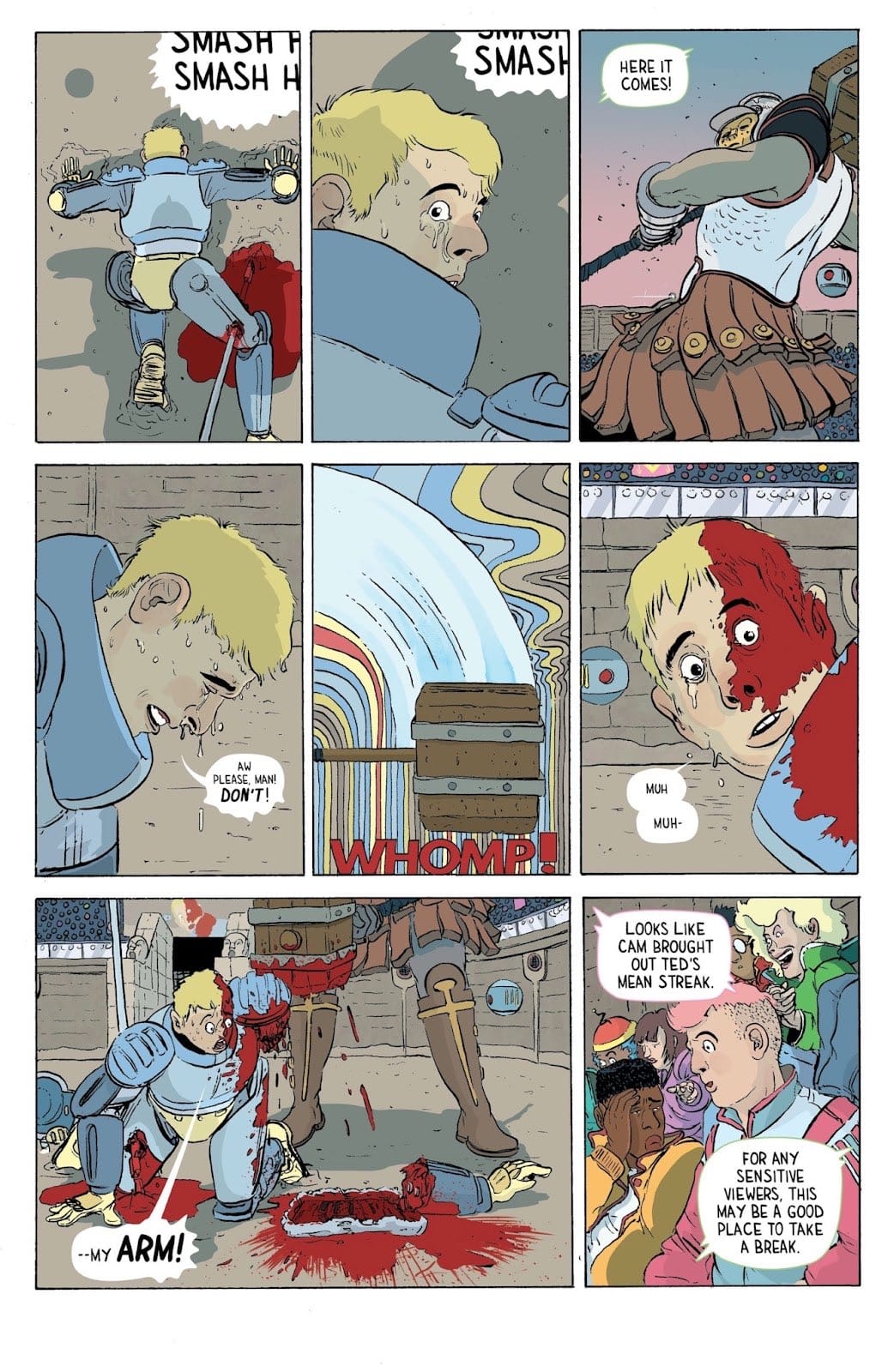 Photo Credit: Oni Press
Photo Credit: Oni PressHIGUERA: I have to ask. Your work suggests that power and wealth don’t just shape society—they deeply influence personal relationships, often leading to betrayal and self-destruction. In crafting Luella’s journey, did you see her as someone trying to break free from that cycle, or is she just another product of it? And do you think true escape from those power dynamics is even possible?
HORVATH: I do think that true escape from those power dynamics is possible, but it feels like it would be progress that would require a jump between generations to put an end to the cycle. Luella is trying to break that cycle, and that’s how the fracture begins between her and Ted. Out of that trauma, though, she regresses to a self-destructive path of vengeance that requires that capitalist success again, and I feel like she’s well aware of it, even if she can’t stop herself.
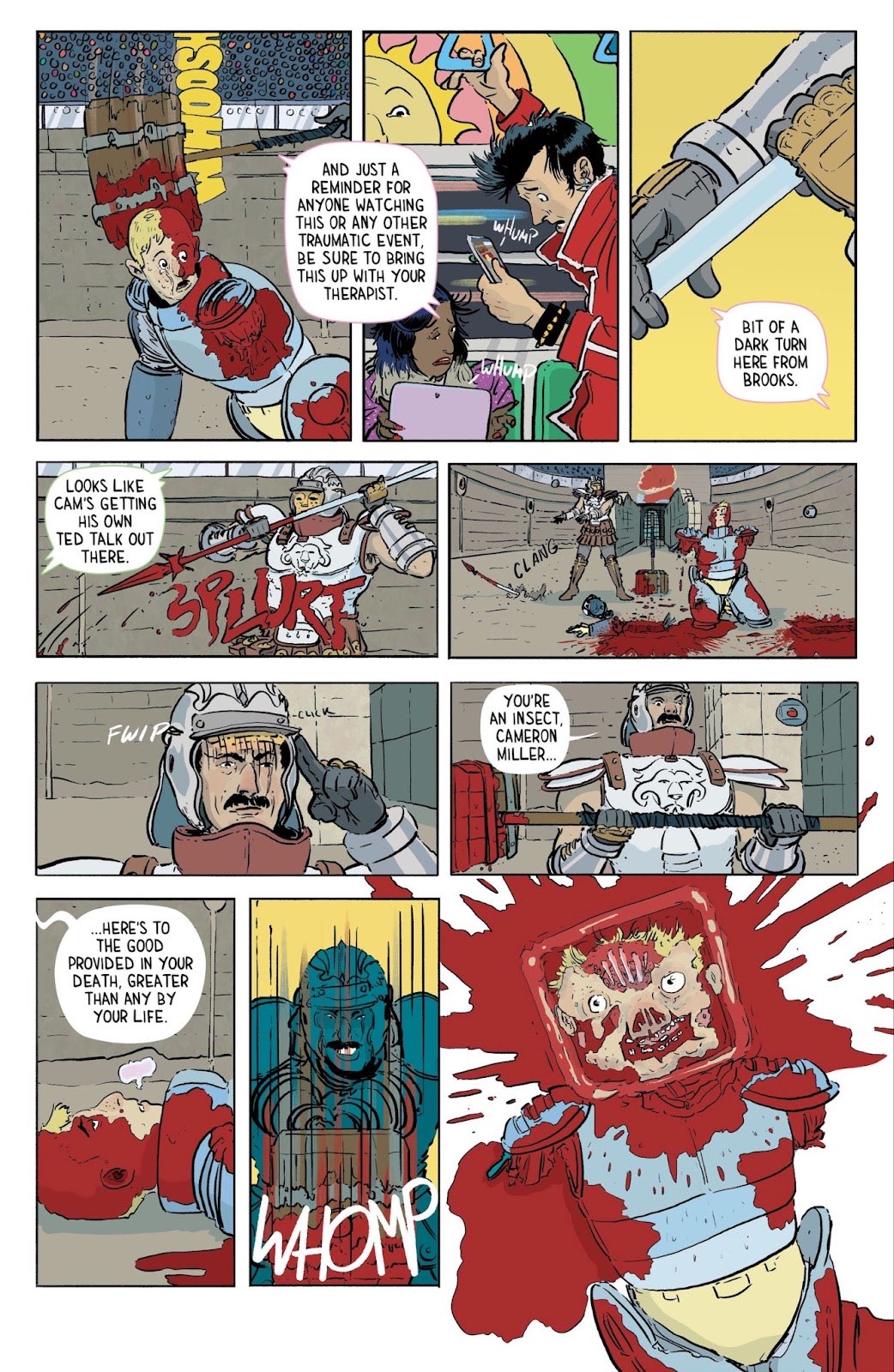 Photo Credit: Oni Press
Photo Credit: Oni PressHIGUERA: You’ve described Free For All as a satire that “skewers the uber rich” and takes a brutal look at capitalism. Given the current political and economic climate, do you think the story hits differently now than when you conceived it?
HORVATH: Yeah, it’s been a morbid fascination to see how much more relevant this book has become in the past eight years since I started working on it. I wish this weren’t the case, but whatever seeds of unrest (financially or politically) planted back then have blossomed into a horrible bouquet.
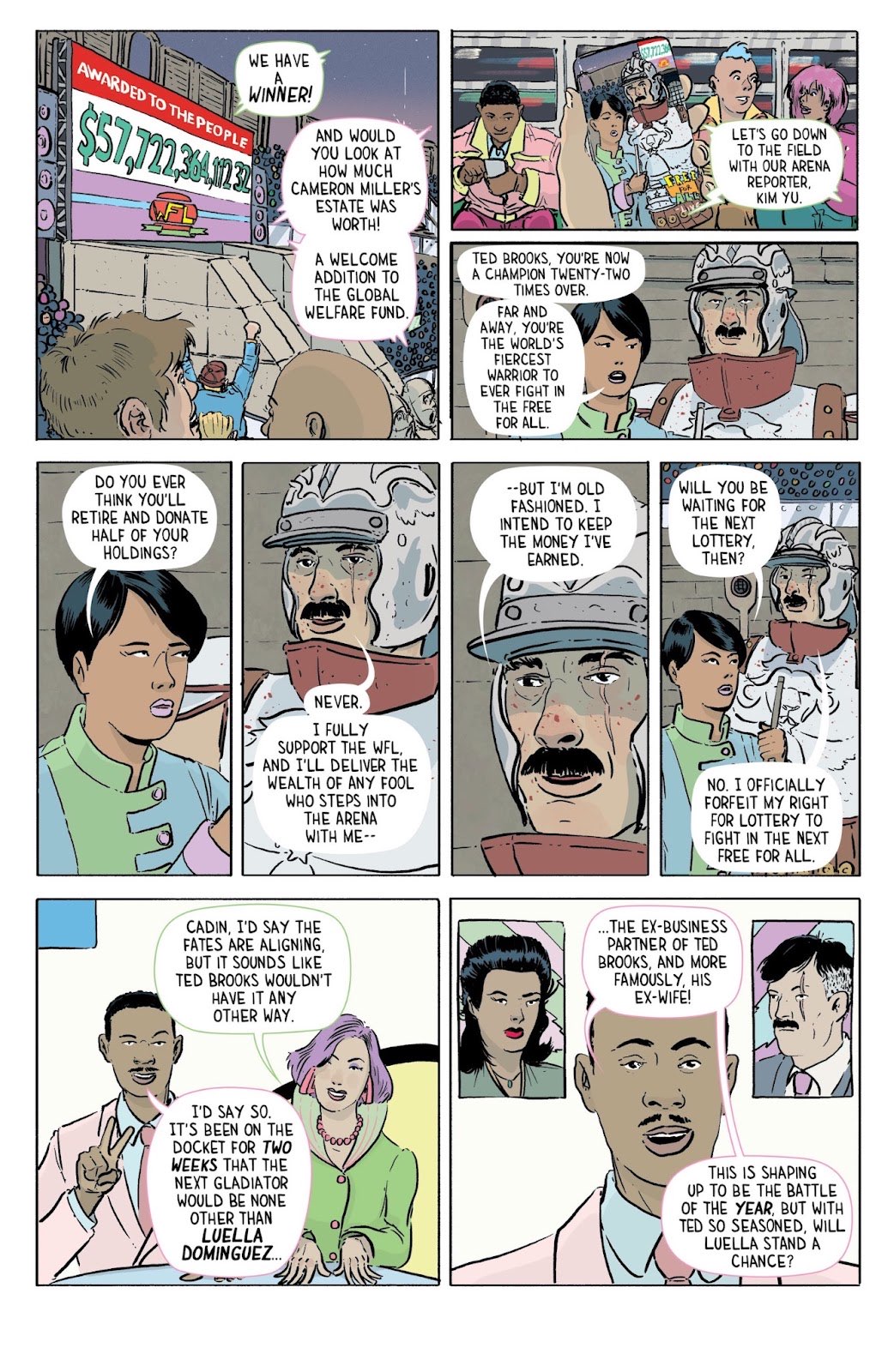 Photo Credit: Oni Press
Photo Credit: Oni PressHIGUERA: Violence plays a central role in Free For All, but you’ve noted that it needed to be both disgusting and over the top. How did you balance making the fights gripping without glorifying them?
HORVATH: I honestly think a big component of the fights is the audience reactions, either in the arena, at home, in bars, or in the streets. It felt imperative to include their responses to everything, and at times, you get the feeling that even though there’s this unhealthy obsession with the Free for All fights, they’re not a monolith. The violence crosses the line for some of them; for others, they can’t get enough. I’m drawing comparisons to our complacency with violence in oversaturated media consumption, and hopefully, it’s serving up some food for thought or at least some hors d’oeuvres.
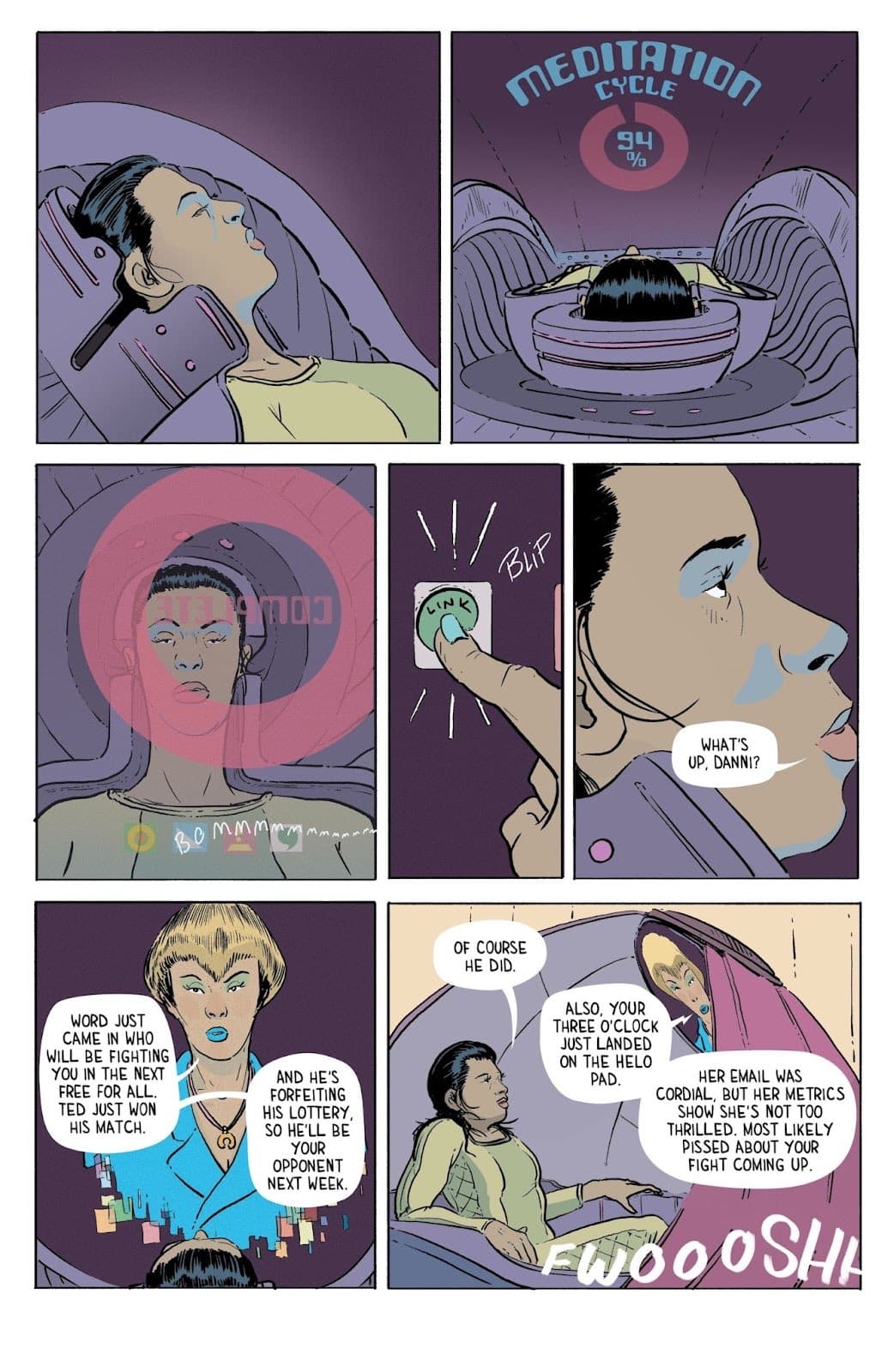 Photo Credit: Oni Press
Photo Credit: Oni PressHIGUERA: You’ve compared the fights in Free For All to modern spectator sports like boxing and football. Do you see this story as an exaggeration of our existing entertainment culture, or are we already halfway there?
HORVATH: Piggy-backing off of my previous answer, I think there was an older line of thinking where there was a concern that spectator sports would become more and more violent to the point of The Running Man (1987), but now I think there’s a broader level of consumption via social media where it’s a mash up of everything: entertainment, sports, news, politics, natural disasters, and military violence. It sorta feels like we’re more than halfway there.
HIGUERA: Anything you want to say to readers and fans?
HORVATH: A huge thank you to everyone who’s checked out my work! I’ve had immense luck finding an audience, and I’m incredibly grateful to everyone who’s jumped aboard. I’m excited to have a change of pace with Free for All before the next volume of Beneath the Trees makes it out into the world this summer.
Patrick Horvath’s work speaks for itself, and calling it unique is an understatement. But, the best part is that it’s available at your local comic shop now! If you don’t want to miss out, visit your LCS immediately!














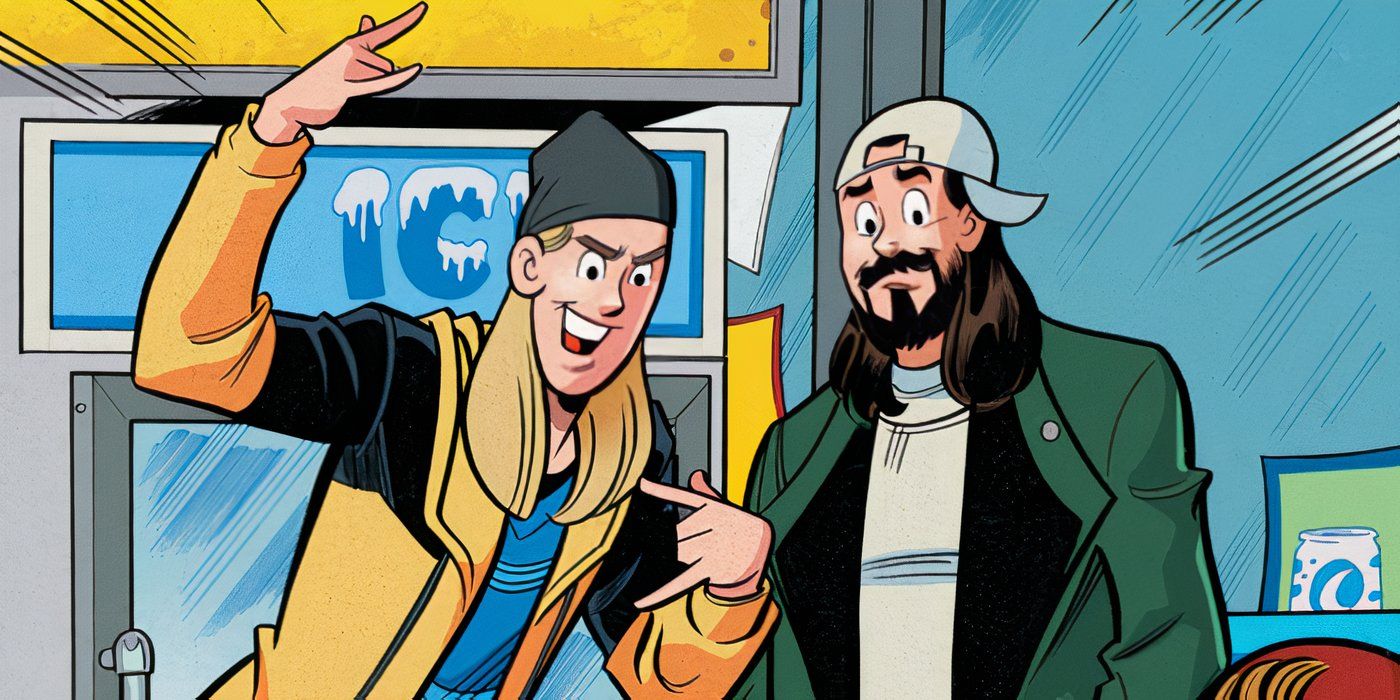
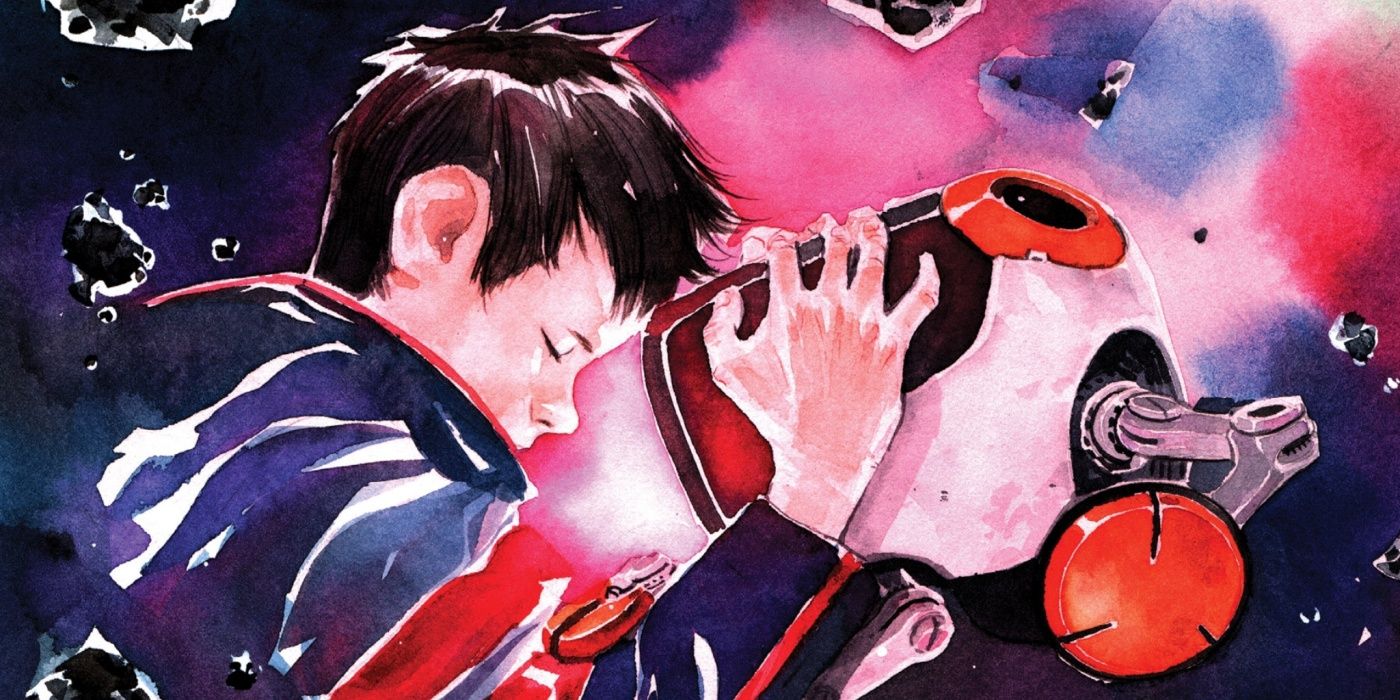

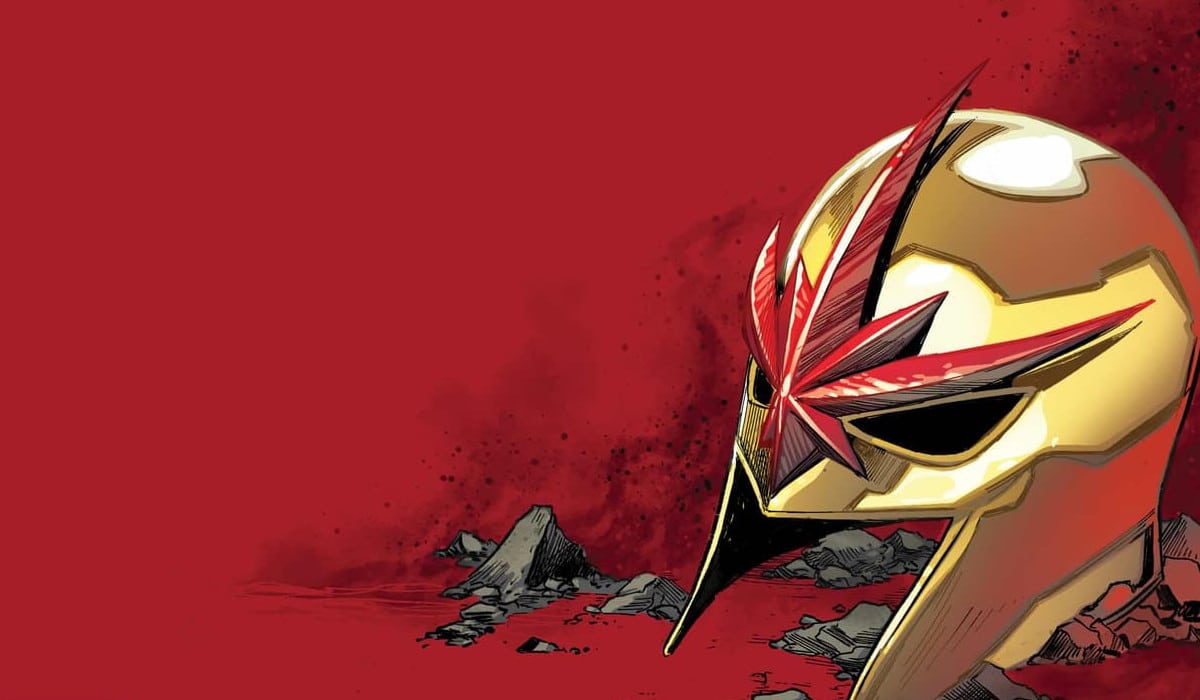

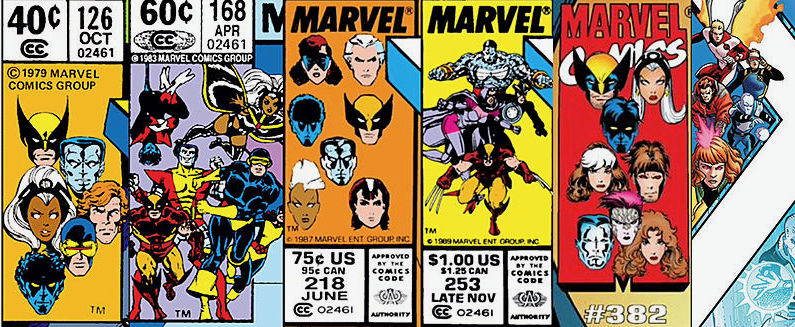

 English (US) ·
English (US) ·